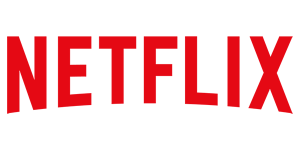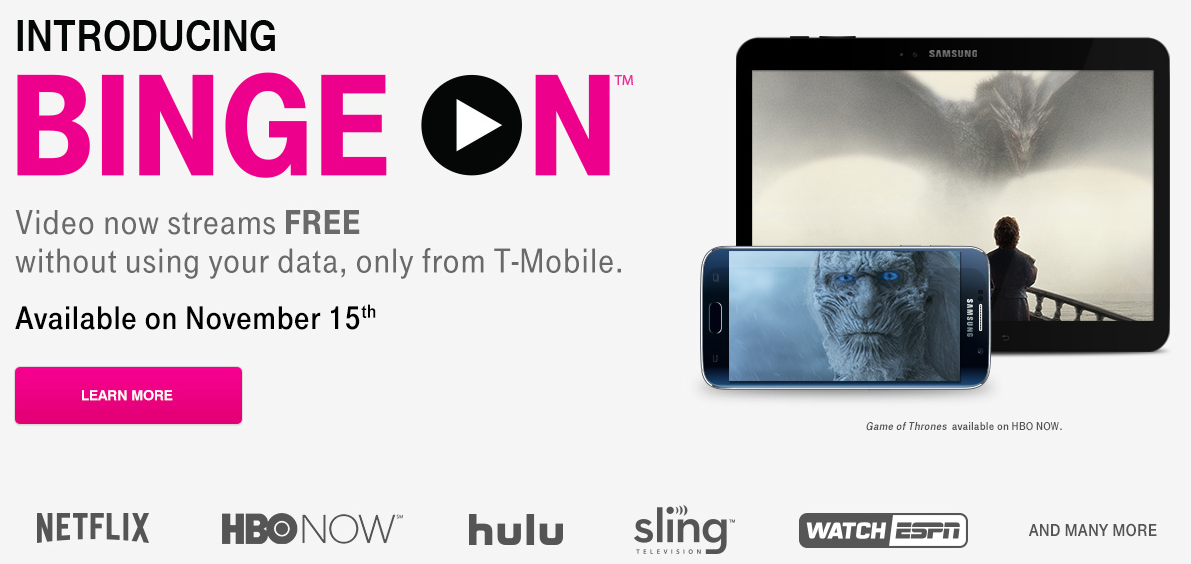Mid November last year, T-Mobile USA launched its 10th uncarrier initiative, Binge On. It has been the most controversial uncarrier launch so far.
Why? Binge On zero-rates commercial video services – so that T-Mobile customers can watch as much as they like without emptying their data bucket. The trade-off? Video streams are slowed down to about 1.5 Mbit/s which means that image quality suffers – which is visible, but perhaps not on smaller screens like smartphones and tablets.
Normally, this would have been seen as an obvious violation of the principle of net neutrality, but since T-Mobile included many video services from start – and saying that any other service may join – and since there’s no money transferred, T-Mobile seems to have avoided criticism from the powerful US regulator FCC. So far, at least.
And since T-Mobile already in June 2014 launched a similar zero-rated proposition for music called Music Freedom (later copied by e.g. Sprint’s sub-brands), the practice was somehow already a market fact.
But since mobile video drives mobile data usage more than any other service – see this example where we correlated Netflix age with mobile data usage – T-Mobile was now challenging the foundation of how mobile effectively is monetised – per megabyte.
And with the T-Mobile release of today, we now have a figure on how much T-Mobile has given away:
“Since launching Binge On, T-Mobile customers have streamed 34 petabytes for free”
T-Mobile had 61 million users on its network in the end of 2015. Of these, 30 million are what T-Mobile calls “branded postpaid”. Binge On is however not given to such customers on T-Mobile’s entry level plan which, if we trust previous indications given by T-Mobile, make up about 50% of the branded postpaid base. 20% of the customers are believed to be on unlimited plans who could stream as much video as they like regardless of Binge On*. This leaves 30% of T-Mobile’s Simple Choice – or roughly 10 million – customers who would actually “stream for free”.
*) A controversial part of the implementation is that T-Mobile enabled Binge On also for unlimited customers
It’s now 2.5 months since T-Mobile launched Binge On. Distributing those 34 petabytes over 10 million customers over 2.5 months gives an average of 1.4 gigabyte of zero-rated video per customer per month.
Why would John Legere (or anyone) voluntarily give away mobile data like this?
It’s all about safeguarding customer loyalty. Many operators have started to treat gigabyte as the new currency. And if you need to give something away, it’s better to give something that you produce (like mobile data) than give something which you do not produce (like money or iPhones).
It’s important to remember that T-Mobile’s entire postpaid base today consists of non-binding contracts. Next month they can all churn. At least in theory: Many of them have taken financed handsets from T-Mobile (through installment or leasing plans). If they do cancel the service contract, remaining payments become due immediately.
Facing this churn risk – and the associated subscriber retention cost (SRC) or the subscriber acquisition cost (SAC) associated with finding a new customer – T-Mobile has obviously decided that it’s more important to create propositions that make customers want to stay than to earn revenue on every single megabyte. If unlimited mobile video is what makes customers stay, they T-Mobile will give it (but “optimise” the throughput to make sure it doesn’t kill their network).
![]() Our Nonstop Retention® Index is measuring an operator’s ability to keep customers loyal – without binding them. And you can see who tops the list.
Our Nonstop Retention® Index is measuring an operator’s ability to keep customers loyal – without binding them. And you can see who tops the list.
This doesn’t mean that we think that zero-rating is the right thing to do. With Binge On, T-Mobile also faced a storm of criticism, something their press release of today partly addresses.
 But giving 1.4 gigabyte of free video streaming per customer per month is most certainly creating loyalty among customers who love Netflix, Hulu, HBO and other streaming video services. And T-Mobile is likely having many such customers in its base. At the same time, existing customers on the entry level plan who want Binge On have to upgrade. For a single user, this means 15 USD more per month.
But giving 1.4 gigabyte of free video streaming per customer per month is most certainly creating loyalty among customers who love Netflix, Hulu, HBO and other streaming video services. And T-Mobile is likely having many such customers in its base. At the same time, existing customers on the entry level plan who want Binge On have to upgrade. For a single user, this means 15 USD more per month.
Every operator – also mobile-only operators like T-Mobile – needs to have a strategy for TV and video. Make, partner, zero-rate? The days when TV and video were consumed in the living room are long gone.


